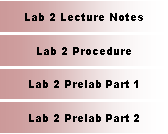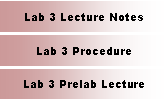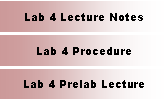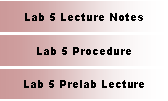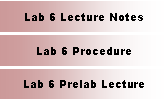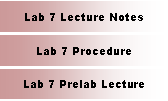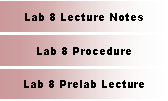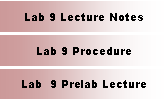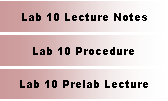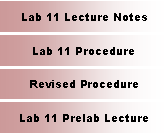
|
SIU Home | Technology Home | Complete Course Syllabus | ET 332a Intro Course Outcomes | Policies and Grading | Lab Activities | Homework | Lecture Notes
Copyright © 2015 |
|
Department of Technology |
|
ET 332a Dc Motor, Generators and Energy Conversion Devices Laboratory Activities and Experiments |
|
Mailing Address: 1230 Lincoln Drive Room D110 Carbondale, IL 62901 |
|
Instructor Contact Information |
|
Phone: 618-453-7839 E-mail: powerguy@siu.edu Skype Name: carl.spezia |

|
1.) Using Spreadsheets in Laboratory Calculations (Handouts) The Excel spreadsheet is introduced and used to produce graphs that are commonly found in technical reports. Linear graphs are produced. Semi-log plots are created by using a log function to reduce the range of the data and by using the scaling abilities of the spreadsheet. Embedding the results into reports is also demonstrated. The Microsoft Equation Editor is demonstrated. A student activity uses the developed skills to make plots and produce professional solutions to technical problems.
Download Equation Editor Activity
Equation Editor Software Demonstrations Equation Editor Video Demonstrations This link leads to a set of five videos that explain how to use the Microsoft Equation Editor included in Office 2013
Excel Graphing and Charting Demonstrations EMS Excel Video Demonstrations This link leads to a set of four presentations that show how to use MS Excel spreadsheets to plot engineering data. The presentation give an overview of the charting capabilities of Excel and then show how to format the graphs. The presentations also demonstrate how to add trendlines to plots and convert axis to logrithmetic scales
2.) Power Laboratory Safety and Work Procedures/Resistance of DC machines (Hampden Experiment 1) Students are instructed in high voltage laboratory safety rules. Avoiding electric shock and other safety hazards encountered in the power lab are covered. The basic operation of the fractional-horsepower motor lab equipment will be covered. The class will perform a simple experiment to determine the dc resistance of the field and armature coils of a typical dc motor.
3.) Saturation Curve of a Generator (Hampden Experiment 2) The main object of this lab is to obtain the necessary data to plot a saturation curve of a separately excited dc generator. The shape of this curve is a scaled representation of a machine’s B-H curve. The effects of saturation on the output of a generator are observed.
4.) Counter EMF Force (Hampden Experiment 16) The counter EMF force of a dc machine will be observed. The laws of induction and force on a conductor will be verified using a dc machine.
5.) Load Characteristics of a Separately-Excited Shunt Generator (Hampden Experiment 6) The load level Vs terminal voltage characteristic of a separately-excited shunt generator is developed. The voltage output capabilities of the machine are examined at the rated speed and field current of the device.
6.) Shunt Motor Characteristics (Hampden Experiment 18) The speed-torque characteristic of the shunt dc motor is determined experimentally. The speed regulation of the machine will be found. The relationship between the load torque and the armature current is examined.
7.) Efficiency and Losses in a Dc Shunt Motor (Hampden Experiment 21) The operating efficiency of a shunt dc machine will be determined by lab tests. The sources of losses in dc machines are identified and measured. These losses can be divided into fixed and load-variable components.
8.) Series Motor Characteristics (Hampden Experiment 19) The speed-torque characteristic of the series dc motor is determined experimentally. The speed regulation of the machine will be found. The relationship between the load torque and the armature current is examined.
9.) Compound Motor Characteristics (Hampden Experiment 20) The speed-torque characteristic of the compound dc motor is determined experimentally. The speed regulation of the machine will be found. The relationship between the load torque and the armature current is examined.
10.) Shunt Generator Output Polarity and Voltage Build-up (Hampden Experiment 3) This experiment covers the correct procedures for preparing a shunt generator to for operation. The voltage build-up process is examined. The proper connections for voltage build-up are given.
11.) Field Resistance Vs Generator Voltage Build-up/Motor Control Simulator (Hampden Experiment 4) This lab examines the affects of field resistance on generator voltage build-up. The lab demonstrates the effect of excessive field resistance on terminal voltage. The second section introduces ladder diagrams and motor control with an animated, computer-based simulator.
12.) PV Array Economics Report
Students survey the Web and other technical resources to determine the cost and feasibility of utilizing solar power in a grid-tied residential application. A short report summarizes the findings.
|
Lab Material Downloads |

